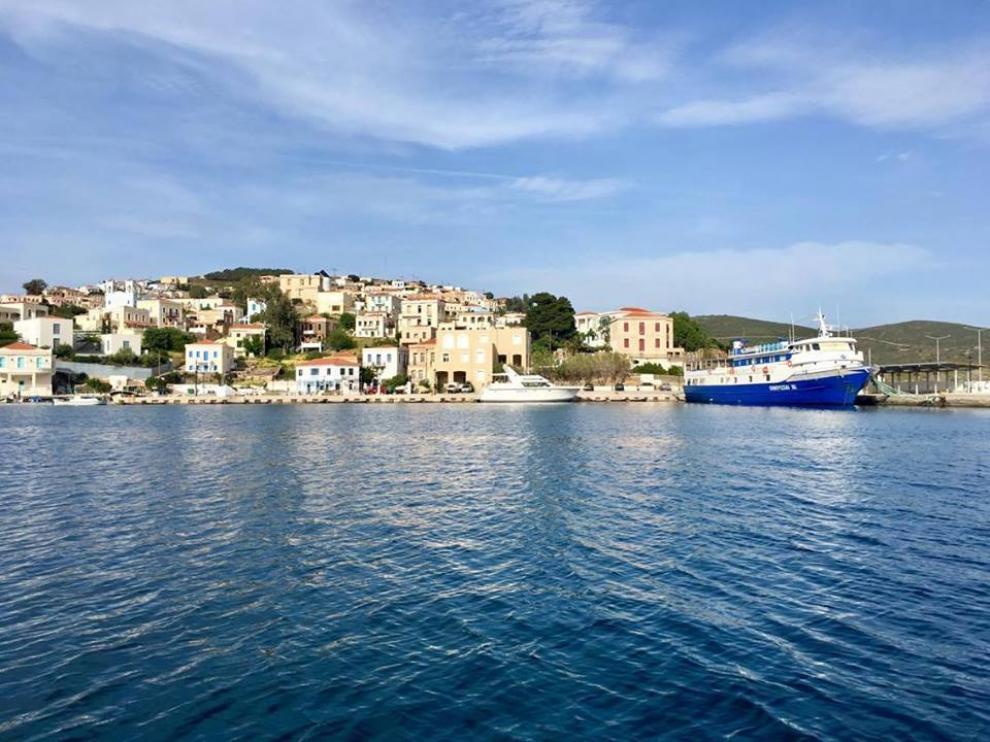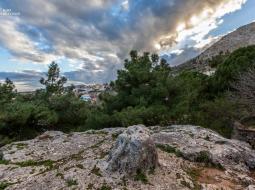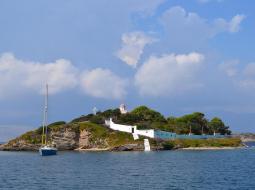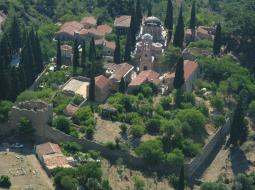Thessaloniki gets ready for its metro launch in November
The underground rapid transit lines have been under construction for almost two decades due to various project delays
 TheMayor.EU logo
TheMayor.EU logo 
In the 11th Century the Byzantines built Nea Moni (New Monastery) and built the fortress in Chios town to defend the port from Arab pirates. There was a short period where the Franks ruled the island but it gradually fell under the influence of the Genovese who used it as a transit station for their trading journeys to the east. As the Byzantine empire weakened, the Genovese became more influential on the island. Chios was given to Benedetto Zaccaria in 1307 and was under Genovese rule until 1329 when it was reoccupied by the Venetians under Andronicos Palaiologos. When the Genovese retook the island in 1346 they held it for two more centuries, exploiting the island and its inhabitants and developing the production of mastica. When the production of silk and the introduction of citrus fruits came to Chios, the culture of the island, along with the wealth of its inhabitants flourished. It was this period that the fortified mastic villages were built.
In 1556 the Turkish occupation of Chios began though not much changed from Genovese rule. Because of the mastica Chios was given many privileges and the island flourished under Turkish rule. It was during this period that most of the Catholics left the island after fruitless attempts by the Florentines and the Venetians to capture it. The island continued to grow economically as the population grew to over 100,000. The school of Chios was founded and many of the mansions and churches were built. During the War for Independence in 1822 Chios had little incentive to rebel. Things were pretty good on the island. But a group of rebels from Samos led by Lykourgos Logothetis landed on Chios and with the help of a small number of locals led by Antonis Bournias, besieged the Turkish garrison at the castle. Though the attempt was unsuccessful, it infuriated the Turks who saw it as a betrayal by the people of Chios who had enjoyed more privileges than most of the Greeks under Turkish domination. The rebels left the island leaving the local people to face the wrath of the Turkish army which for 15 days slaughtered, burned, raped and sold the survivors into slavery. Due to public pressure the Turks allowed some of the Chiotes to return, particularly those involved in the cultivation of mastica though island society was not the same, the nobility having fled to Europe. In the meantime Constantine Kanaris destroyed the Turkish fleet in Chios harbor, killing the Pasha.
In 1881 an earthquake killed over three thousand people and destroyed most of the buildings that the Turks had left standing. On November 11th 1912 Chios became part of Greece. Since then the island with its ships and history of sea-faring has been an important part of Greek history, culture and economics. In the Second World War they transported evacuating British and Greek soldiers to the Middle East and fought in the resistance against the Nazi occupation. The past century saw many of the men of Chios leaving the island on ships and some of them making new lives in the United States, England and elsewhere while others worked on the boats and returned to their families between trips. They return in summer with their families, giving their children, most of whom were born outside of Greece, a sense of their own history and culture.
Source: greektravel.com
Chios is the fifth largest Greek island (904 square kilometers) with a coastline of 213 kilometers and a population of 54.000. The island is located very close to the Asia Minor coast.
The Regional Unit of Chios includes the islands of Chios, Psara, Antipsara and Oinousses. Administratively, it is divided into three municipalities: Chios, Psara and Oinousses. The town of Chios, called “Chora” by the locals, is the capital of the island.
Chios is a mountainous island. A few valleys are formed in the south and east regions of the island. Pelineo Mountain overlooks the northern part of the island, with the highest peak, Profitis Helias, at 1.297 m. Chios Island is known for its picturesque landscape, and also for the Mediterranean climate, with mild winters and sparse rainfalls in the summer.
The main local products are mastic, citrus fruits, olive oil, figs and wine. Chios mastic is a unique product. Apart from the local agricultural products, Chios is famous for its maritime tradition. A lot of Chiots work in the Merchant Navy sector whereas some of the most important Greek shipping companies have been founded by families that come from the island.
Source: https://www.chios.gr/en/

The Daskalopetra rock, which is located at Daskalopetra beach in the area of Vrontados, is one of the island’s most well known archaeological sites and it has always been a sightseeing attraction. Tradition links it to Homer and is considered to be the area where the great poet used to teach.
Chios is one of the seven cities (Izmir, Chios, Colophon, Ithaca, Pyrgos, Argos, and Athens) that are claiming Homer's origin. It is considered to be the most likely among the possible birthplaces of Homer, given valid evidence by a number of ancient writers and poets.
Apart from its connection with Homer, the Daskalopetra rock is also considered to be the altar of a pagan god.

Chios has the best-preserved medieval defense networks in the Mediterranean (castles and towers, watchtowers, fortified settlements). It is a remarkable preservation of the defence system, similar to those of other parts of the Mediterranean, with Byzantine and Genovese elements. The island’s medieval past is marked in the monuments of the Byzantine, Genoese and Venetian period that were salvaged both in town and in the villages. The island’s key Eastern Mediterranean position, from a geopolitical standpoint, resulted in it acquiring such significance during the Byzantine Empire (seat of the Naval Administrative Region of the Aegean). It also caused competitiveness amongst the Genoese and Venetians who tried to conquer it.
The medieval period comes to life in the island’s numerous castles and towers, which needed to be fortified and defended against pirates, invaders and aspiring conquerors.

The Nea Moni was built in the 11th century and was dedicated to the Assumption of the Virgin Mary. It covers an area of approximately 17,000 m2 and is located in the central region of the island of Chios. The buildings comprising the Nea Moni Monastery include the main church (catholicon), 2 smaller churches, a table or trapeza which was the monks’ dining area, the monks’ quarters and underground tanks that were built to collect water. In the northwest corner of the Monastery, there stands a strong defensive tower. A tall stone-wall surrounds the complex of the Monastery.
Address: 2, Demokratias Street 82100, Chios